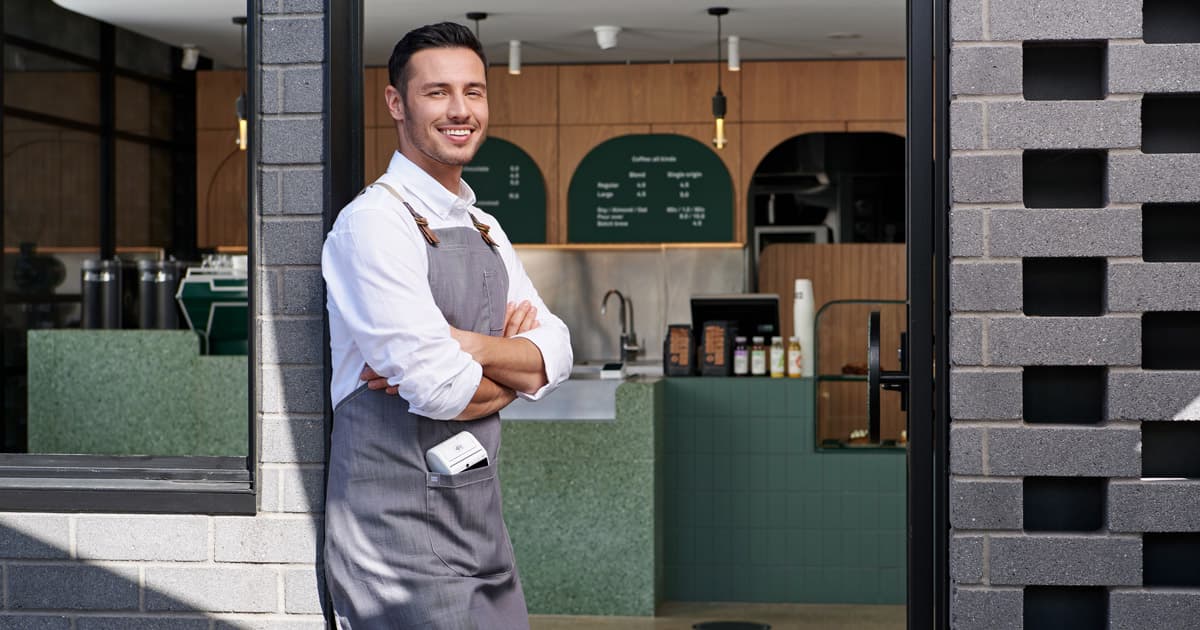
- Business Growth & Optimisation
How the Marketing Funnel Works from Top to Bottom
The key to an effective funnel is understanding your customers.
A marketing funnel describes a customer’s journey with your business. It lays out the steps each potential customer takes — from discovering your business to making a purchase decision.
Your marketing funnel is key to generating a healthy flow of customer demand. It’s also crucial to your growth strategy; when you know where and how customers find your business, you can use those insights to scale. On the other hand, if there are blind spots in your marketing funnel, there’s likely budget being wasted on marketing strategies that could be improved.
Keep reading to learn how the marketing funnel works, and how you can use it to attract, engage and convert prospects into repeat customers.
Defining the marketing funnel
Think of the marketing funnel as a visual framework through which a person becomes a paying customer. They begin at the top of the funnel (at its widest point) when they first become aware of your business, and finish at the bottom as a paying customer. Typically, not everyone who is aware of your business will convert, which is why the funnel grows tighter the further it progresses through the funnel stages.
You’ve no doubt seen a marketing funnel before. Yet there is no one universally recognised marketing funnel. The name itself even has a few different variations, including customer funnel, purchase funnel, sales funnel, conversion funnel.
Regardless of the particular funnel you are using, the chronological process of converting customers involves:
Awareness: The prospect realises they have a need.
Interest: The prospect begins searching for services or products to meet that need.
Desire: The prospect evaluates their options.
Action: The prospect makes a purchase.
The benefits of a marketing funnel
A marketing funnel essentially breaks down the stages a customer goes through when making a purchase decision. That’s why the marketing funnel is considered a blueprint to conversion. It helps you understand what motivates your customers to purchase, when to engage with them, and what’s not working with your current approach.
It can help you plan your marketing efforts strategically, enabling you to guide prospects through the funnel with less drop-off — meaning more paying customers. Another core benefit of understanding your marketing funnel in place is measurability. You can quickly identify where exactly in the funnel you’re losing customers, allowing you to adapt and adjust your strategy as you go.
This insight can also help predict future sales volumes. If your usual conversion rate is 5% and you’ve just successfully acquired 1,000 new email subscribers off the back of a marketing campaign announcing the release of a new yearly journal in the last 7 days, you can anticipate 50 additional sales.
The marketing funnel works as a whole; potential customers go from stage to stage, all the while getting closer to making a purchase. That’s why your business needs to be marketing to customers at every stage of the funnel.
Marketing strategies for each stage of the funnel
1. Top of the funnel: the awareness stage
Known amongst marketers as TOFU (meaning top of the funnel), the awareness stage is where prospective customers discover your business for the first time. They might have engaged with an Instagram ad, or found your website on Google. Your customers could be anywhere — that’s why a strong brand presence across multiple channels is key to growing awareness.
At this point, the prospective customer doesn’t know a lot about your brand — which is why your marketing at this stage should focus on introducing the brand and its offering to people who have a want, or a need, for it.
Some examples of marketing strategies for the awareness stage include:
a video on your website’s homepage introducing visitors to your offering
a blog post that uses SEO to capture new audiences via Google
a paid Facebook ad that showcases your businesses to a wide targeted audience
2. Middle of the funnel: the consideration stage
The middle of the funnel, also called MOFU, is where people who have meaningfully engaged with your brand sit. These people might have followed your business on Instagram or subscribed to your mailing list, for example.
These potential customers will likely be weighing up their options, which means earning their trust is key to beating the competition. This is where you set your brand apart as the superior option. You do this by focusing on your unique selling points.
Marketing strategies to help build momentum in the consideration stage of the funnel include:
a social media post sharing the sustainability measures included in your supply chain
icons on your website that call out benefits such as free shipping and complimentary gifts
case studies exploring how your offering has helped other customers
solution comparisons
customer reviews
3. Bottom of the funnel: the conversion stage
The bottom of the funnel (BOFU) is where you give prospective customers the final nudge towards purchase. At this point, you’ve caught their attention, established trust, and forged a brand relationship. Now it’s simply a matter of conversion.
This stage is the most crucial, since it is the one that brings in revenue. It’s ok to be more direct; these people are already aware of your brand, and your offering. Some examples of marketing that can help to finalise the sale include:
a trial offer
a free assessment or evaluation
a social media campaign using retargeting
an email with a one-time discount code
In-store, the quickest way to convert a potential customer who may be on the fence about making the purchase that day is to remove any unnecessary hurdles to purchase. An agile and intelligent EFTPOS system like Zeller Terminal will enable your customers to pay however is most convenient for them, and help to minimise long lines.
Tips to improve your marketing funnel
Once you understand your marketing funnel, you can identify opportunities to make changes to improve your return on investment and grow your business.
Here are some simple ways to supercharge your marketing funnel:
Monitor customer behaviour and prioritise trends that resonate with your target audience. If you notice your numbers, see if your customers are moving to other platforms or changing their media consumption habits.
Ask customers how they found out about your business. Then, double down on advertising in those channels.
Grow your email database. You can use email to send one-use discount codes, build momentum for new product launches, and strengthen your brand through holiday messages, email newsletters and the like.
Make your calls-to-action more specific. In every piece of marketing, the action you want the audience to take should be clear. Should they call to book an appointment? Register for a free trial? Visit in-store? Decide on the action you want your customer to take and make your calls-to-action clear.
The marketing funnel is a strong foundation upon which to build your marketing strategy. Paying attention to your marketing funnel will help align marketing activity to purchasing motivations, ensuring you’re getting a return on the time and money you’ve spent converting customers.
Now that you know the power of the marketing funnel, sign up to the Business Blog to cash in on valuable insights sent straight to your inbox.



